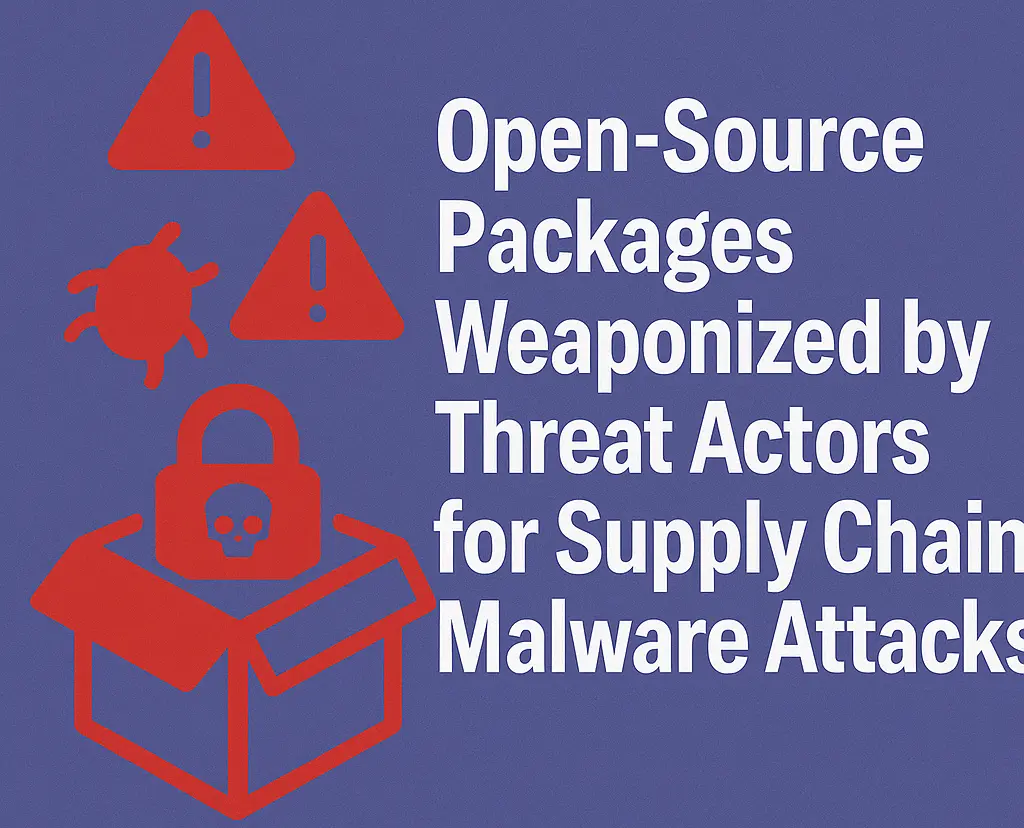|
Getting your Trinity Audio player ready...
|
Security researchers have identified a growing trend of cybercriminals exploiting open-source package repositories to deliver sophisticated malware.
Malware Hidden in Trusted Open-Source Packages
The Socket Threat Research Team has revealed an alarming rise in the weaponization of open-source software packages. Cybercriminals are embedding advanced malware, including infostealers, remote shells, and cryptocurrency miners, deep within widely used package registries like npm (Node.js), PyPI (Python), Maven Central (Java), and RubyGems.
These attacks focus on the software supply chain, exploiting trusted package ecosystems to spread malicious code to developers and organizations worldwide. By compromising these platforms, attackers can silently infiltrate networks, steal sensitive information, and disrupt critical systems.
How Attackers Exploit Open-Source Dependencies
Read More: China Linked Cyber Groups Exploit Zero Day Flaw in SAP NetWeaver to Breach Global Networks
Open-source components are now foundational to most modern software, often making up 70–90% of a typical application’s codebase. Developers rely on these prebuilt modules for rapid development, but this convenience comes with risks.
Popular packages have complex dependency trees, where a single update can pull in dozens of additional components. Threat actors are using this structure to inject malicious code into trusted dependencies, creating hidden backdoors that go unnoticed during standard installations.
Key Techniques Used in Supply Chain Attacks

The research identified several techniques used to target these open-source ecosystems:
- Typosquatting:
Attackers create malicious packages with names that closely resemble popular libraries—often differing by just one letter. Developers mistyping the package name accidentally install the malicious version, leading to credential theft or data exfiltration. - Repository and Caching Abuse:
In ecosystems like Go, attackers exploit cached versions of cloned repositories, spreading malicious updates even after the original repository is restored. These backdoored modules can execute remote commands and establish persistent access. - Obfuscation Tactics:
Cybercriminals use random variable names, heavy minification, and encoded scripts to hide malicious code. Techniques like Base64 and hex encoding make it harder for traditional security tools to detect harmful payloads. - Multi-Stage Malware:
Attackers deploy seemingly harmless packages that later download additional, more dangerous components. This tactic, observed in North Korean campaigns, initially collects browser and wallet data before deploying backdoors for long-term access. - Slopsquatting:
This emerging method leverages AI-driven code suggestions. Attackers register package names that AI-powered code assistants mistakenly recommend. Developers who follow these suggestions unknowingly introduce vulnerabilities into their projects. - Abusing Trusted Services:
To evade detection, some attacks leverage legitimate platforms like Gmail, Discord, and SaaS APIs to exfiltrate data. This blending of malicious and normal traffic makes it difficult for network defenses to distinguish threats.
Security Recommendations for Developers

Experts recommend a multi-layered defense approach to counter these sophisticated supply chain threats:
- Monitor Dependencies: Regularly audit third-party packages for suspicious updates or unfamiliar dependencies.
- Check for Lookalikes: Use automated tools to detect typosquatting attempts.
- Deep Scanning: Analyze both the source code and installed packages for hidden threats.
- Limit Allowlisting: Avoid blanket trust for popular platforms; always monitor outbound connections.
- Behavioral Analysis: Integrate static and runtime analysis into CI/CD pipelines to catch anomalies during development.
Growing Threat Landscape
As open-source software continues to expand and AI-driven development tools become more common, the attack surface for supply chain threats is expected to grow. Vigilance, stronger security protocols, and continuous monitoring are essential to safeguard against these evolving risks.
Would you like me to make it more SEO-friendly and engaging for online publishing?




